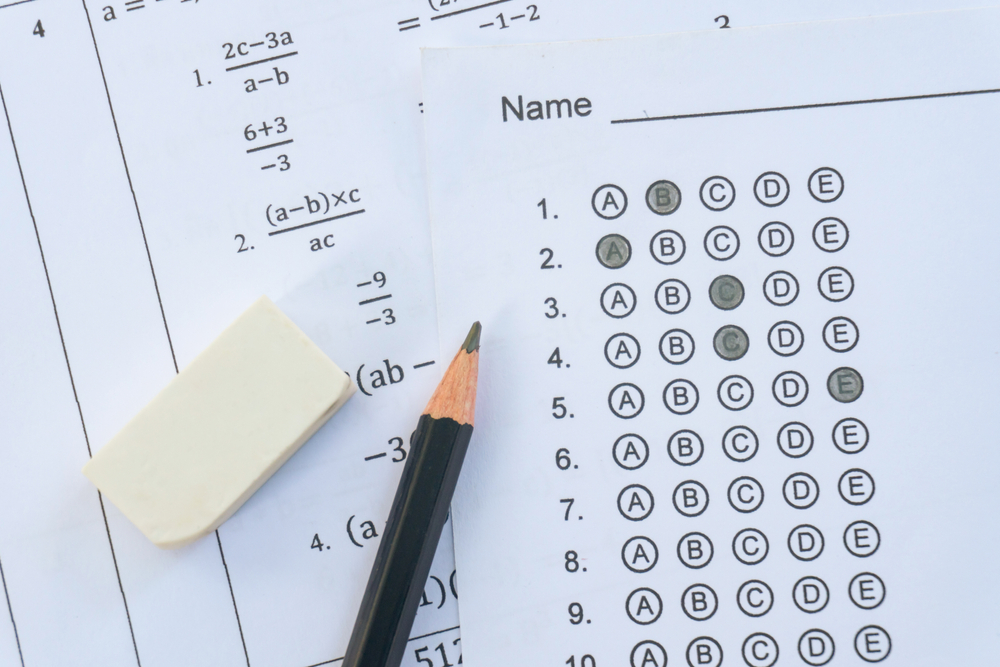The SAT, ACT, and other standardized tests have become ingrained as an important part of the “academic” culture created at Montclair High School. While the SAT has been considered worldwide as a standard metric of measurement for college readiness-even going so far as to be referenced as a measurement of intelligence-it has been found that test scores have begun to line up linearly with the property value of the person taking it.
Opportunity Insights, run by a team of Harvard researchers, revealed that while over a third of the richest families in the U.S. achieved a score of 1300 or above on the SAT, only 5% of Middle Class students did, with only 1 in 5 of lower class families taking the SAT to begin with. The lowest overwhelmingly being people of color. This correlates with the drastic fall in POC college attendees following the disbarment of Affirmative Action, and growing concerns that our higher education system is becoming uniform in race as well as class.
After the pandemic, only slightly over 30% of people of color have opted to submit their SAT scores when given the choice to, compared to the 61% of both white and asian students. This statistic is not surprising considering that of those scoring higher than a 700 on the math and reading section of the SAT, only 1% were black compared to the 45% of white students. In order to understand why the black community appears to struggle a disproportionate amount on the SAT, one must first look at the history of the SAT itself.
The SAT was originally used in WW1 in an effort to determine the IQ of soldiers, but was taken over by a man named Carl Brigham. Brigham branded the SAT an “Intelligence test” following his concern about the number of immigrants flooding into the country. In his book “A Study of American Intelligence” in 1923, he argued education would continue to deteriorate as long as races continued to mix, asserting that the SAT was the proof the world needed that white people, who did proportionately better on the test, were biologically smarter.
The SAT was thus catered to the abilities of white students, focusing more on words and passages that would circulate greater in white communities such as “regatta”.
In 1998 the SAT tested two questions, finding that black test takers scored disproportionately better on one, and white students did disproportionately better on the other. The College Board then got rid of the questions black students performed better on but kept the question in which white students excelled.
As the Ivy League attempted to find talented individuals outside of what was known as preparatory schools beginning in the 1950s, they unintentionally gave rise to a new form of expensive preparatory schooling: SAT tutoring. Historians such as Professor Gil Troy now refer to Brigham as a “Pilgrim-pedigreed, eugenics-blinded bigot”, with the SAT beginning to degrade opportunities for POC students. Early proponents of the SAT such as Harvard researcher Henry Chauncey caught on to this trend quickly, admitting in a 1999 Frontline interview that “[m]y attitude was always that the tests were very helpful, but they weren’t everything. You had to take into account whatever other records you had in making any decisions. So I’m a bit unhappy with the uses to which some colleges, or some institutions, use this.”
Although this score gap between white and black students started to shrink in the 1970s, it has since widened. As of 2020, black students are still averaging roughly 100 points lower than white students on both math and reading. To this day, less than a quarter of black test takers meet the college readiness benchmarks as compared to the success of more than half of white students. Furthermore, it has never stopped being a reflection of socioeconomic status.
The SAT has undergone numerous changes over the past several decades. Some precautions, such as removing antonym questions, are intended to make it more difficult to be “taught” how to take the SAT. Each attempt at changing the SAT, beginning predominantly in the 1980s, has allegedly tried to more closely associate the questions with the high school curriculum.
In 2024, the math section was changed to heighten focus on linearization and probability, give the reading section a greater understanding of words in context rather than outside knowledge of rarely used words. This new version has been criticized for relying on trick questions, a method, as some teachers argue, that moves us further away from what real life is actually like. This has in part been in effort to remove questions that gauge implicit bias, but the success of this has been dubious.
The SAT is one of the many measurements that move us away from a multiracial and multicultural democracy. Attempts to fix the SAT to create a more diverse pool of college applicants cannot work solely because standardized testing reflects a much larger issue: systemic poverty. The SAT in theory would be a great tool to identify students who embody a higher level of thinking and has on occasion delivered in this service. Yet, in the context of a society in which tests are modeled after a white majority, schooling in predominantly POC communities are underfunded, systematically robbed of an education, and is reduced to − in the words of former President Bush − “the soft bigotry of low expectation,” the SAT simply cannot work.
Perhaps if our society was to provide equal representation and education to all of its citizens, a new version of the SAT has the potential to retain some of its merit. Until then, It may be time we create a college system that does not foster a highly competitive environment in order to have a quality education, a system of education built on equal opportunity in the pursuit of knowledge instead of getting ahead through accumulated wealth. It is only at this point, when we learn to stop standardizing merit through a racial lens, that high school can finally be used as a basis for growth rather than a determiner.








